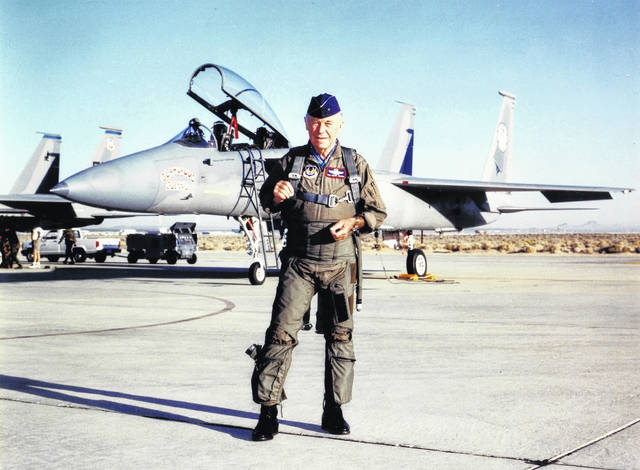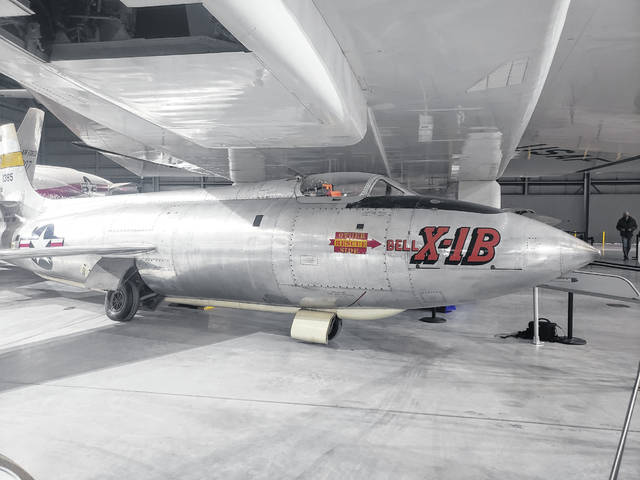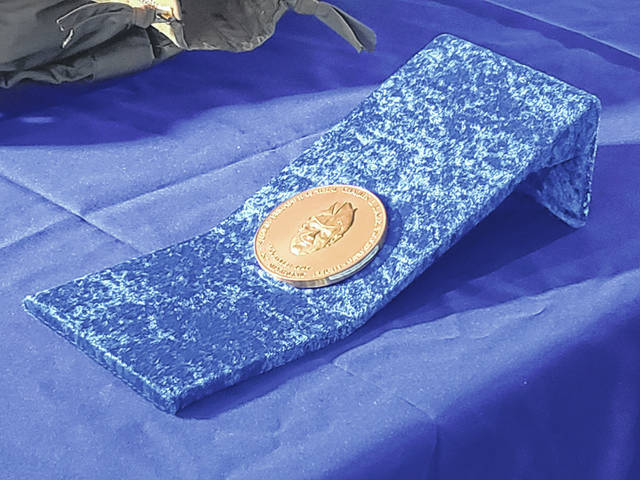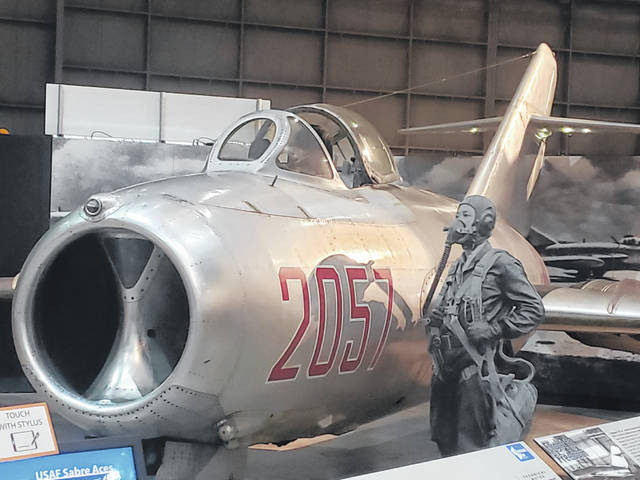



RIVERSIDE — As the United States celebrates the life of Brig. Gen. Chuck Yeager, the National Museum of the US Air Force celebrates his legacy with the planes that Yeager used to shape the course of aviation history.
Yeager, best known for being the first pilot to break the sound barrier in 1947, died on Dec 7. He was 97 years old.
Yeager served nearly 34 years in the United States Air Force, and made countless contributions to aviation technology over the course of his service. He enlisted in 1941, later graduating from flight training and serving during World War II. By the war’s end, he was an ace with 13 kills, including 5 ME-109s in one day.
He retired from service in 1975 with more than 10,000 flying hours in 155 different models of military aircraft.
Yeager’s work existed on the cutting edge of aerospace technology, and the Air Force museum has many of the vehicles he used to test the United States’ knowledge, including the X1B. According to museum curator, Jeff Duford, one could characterize the X1B as a later version of the one Yeager flew. Only seven of the X1B model were ever made. Three of them were destroyed.
Yeager got his start as a test pilot at Wright Field, what would later become known as Wright-Patterson Air Force Base. He later gained the attention of a very important figure in Air Force testing technology, Albert Boyd.
In the late 40s many countries were trying to break the sound barrier, including the United States. The US took a two-pronged approach to this problem: the NACA, precursor to NASA, would be slow and methodical, whereas the US Air Force would move quickly. The two organizations worked together, along with Bell Aircraft, to develop the technology that would take Yeager across the sound barrier.
Back then, researchers didn’t fully understand the aerodynamics they were dealing with, as there were no wind tunnels with which to get accurate data. Additionally, the planes were powered by rocket engines and fueled by liquid oxygen. The three destroyed X1s had internal explosions, caught fire, and burned.
“They were learning by flying,” said Duford. “It was quite possible the airplane would just depart from controlled flight, and going at those speeds would just rip the airplane apart.”
Flying that high, flying that fast was dangerous. A British test pilot was killed the year before Yeager broke the sound barrier, attempting the same thing.
“Chuck Yeager had a combination of characteristics that made him really successful: he was really smart, he was very talented as a pilot, and he was brave,” Duford said. “If he didn’t have all three of those characteristics, he wouldn’t be the person that we know.”
Yeager had incredible talent as a pilot: a quintessential “stick and rudder” guy. He had a sense as a pilot to understand the airplane and how it would operate.
Therefore, it was no accident that Boyd picked Yeager for the X1 project.
The first tests were conducted at Wright Field. However, once it became too dangerous, and too hard to keep secret, tests were moved to California, to what would later be named Edwards Air Force Base.
“When someone thought of testing in the 1930s, they thought of Wright Field,” Duford said.
Yeager went on to continue to radically change the United States’ understanding of aerospace technology. The NMUSAF has three other airplanes that Yeager actually flew, the X3, the XF92, and the X4. All were radically new designs that catalyzed the Air Force’s advancement in airframe shapes and propulsion techniques during the Cold War. Additionally the NMUSAF has on display a MiG-15, the first North Korean fighter acquired by the United States. Yeager was one of two pilots to test the MiG-15, after North Korean defector No Kum-Sok flew it over the 38th parallel in 1953.
“Living on the cutting edge of technology and human understanding is dangerous. And Chuck Yeager was on the edge of human understanding,” Duford said. “Every time he got inside the X1 he was risking his life. We learned so much from the X1 and from these other X aircraft.”
An aircraft model that starts with an X means that the plane is either a test vehicle or a prototype. Typically, X aircraft were never meant to go into production, and usually only one or two would be made at a time. Yeager flew almost all of them.
“The fact that Chuck Yeager flew so many X aircraft really speaks to him helping break boundaries,” Duford added. “It goes beyond developing a new airplane type to go into production. In some ways it’s pure science, pure aerospace research to try and push the boundaries of our understanding of aerospace science and technology.”
Yeager’s contributions will continue to be on display at the Air Force museum for generations to come.
“I think it’s pretty amazing that his legacy is going to be here in the museum. Long after we’re all gone, people will be able to come see these,” Duford continued. “These are the only ones left if there were even more than one built. Certainly as a grouping there is no place in the world that has this combination of military test aircraft.”





